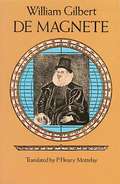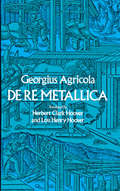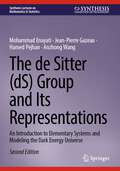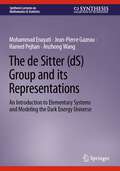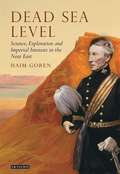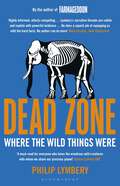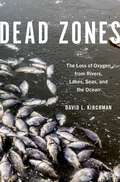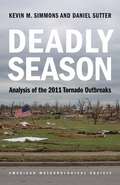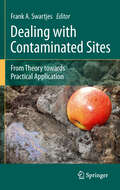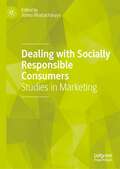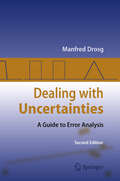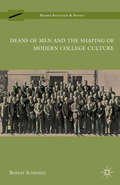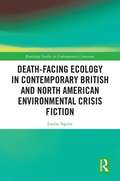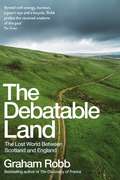- Table View
- List View
Daytime and Night-time Sea Breezes (UEB uncontracted)
by RnibThis page has two diagrams of daytime and night-time sea breezes shown in cross section (from the side) and stretching across the width of the page: one at the top and one at the bottom. There is a locator dot shown, which will be at the top left of the page when the image is the right way up. A dashed line image border surrounds each diagram. Daytime sea breezes (1): The diagram at the top of the page shows an area of land at the left, sloping right and down to a section of sea, starting at the bottom centre of the diagram. Above the land on the left are two wiggly lines with arrowheads and up the page from these are a line of arrows pointing to the right, then down, then back to the left, showing the onshore cool breeze. At the top right of the page are three thick arrows pointing down and left diagonally, representing the sun's energy. There are text labels on the diagram that describe the features and processes shown. Night-time sea breezes (2): The diagram at the bottom of the page shows an area of land at the left, sloping right and down to a section of sea, starting at the bottom centre of the diagram. Above the sea on the right are two wiggly lines with arrowheads and up the page from these are a line of arrows pointing to the left, then down, then back to the right, showing the offshore breeze. There are text labels on the diagram, which describe the features and processes shown.
De-Centering Sexualities (Critical Geographies)
by Richard Phillips David Shuttleton Diane WattThis book of critical rural geography breaks new ground by drawing attention to sex and sexualities outside the metropolis. It explores sexualities and sexual experiences in a variety of rural and marginal spaces with international contributions from a wide range of disciplines. These include: literary and cultural studies, lesbian and gay studies, geography, history and law. Among the topics uncovered are:* a lesbian in rural England* sexual life in rural Wales* sexuality in rural South Africa * scandal in the American South: sex, race and politics* nature and homosexuality in literature* Derry/Londonderry as a sexual space* how 'country folk' are sexualised in popular culture.
De-Centering Sexualities (Critical Geographies)
by Richard Phillips Diane Watt David ShuttletonThis book of critical rural geography breaks new ground by drawing attention to sex and sexualities outside the metropolis. It explores sexualities and sexual experiences in a variety of rural and marginal spaces with international contributions from a wide range of disciplines. These include: literary and cultural studies, lesbian and gay studies, geography, history and law. Among the topics uncovered are:* a lesbian in rural England* sexual life in rural Wales* sexuality in rural South Africa * scandal in the American South: sex, race and politics* nature and homosexuality in literature* Derry/Londonderry as a sexual space* how 'country folk' are sexualised in popular culture.
De Magnete
by William GilbertMuch of modern science is based upon the theories and discoveries of William Gilbert, the brilliant English physician and physicist who was the first great experimental scientist. Gilbert was the first to use the word "electricity," to recognize mass as distinct from weight, to discover the effect of heat upon magnetic bodies, to differentiate clearly between static electricity and magnetism, and to explain phenomena of terrestrial magnetism in terms of the earth as a giant magnet.In 1600 he published De Magnete in Latin. As lively and entertaining as it was scientifically scrupulous, it summarized everything that had previously been known about electricity and magnetism, founded a new science and earned Gilbert the title of "the father of modern electricity." In it Gilbert explores magnetism and electricity, lodestones, phenomena of magnetism, direction of the earth's magnetic lines of force, variation in the compass, dip, the concept of the earth as a giant magnet, and much else.This Dover edition is a complete, unabridged reprinting of the definitive English translation of De Magnete prepared by Dr. P. Fleury Mottelay. Dr. Mottelay has added a number of footnotes that explain points that might be obscure to today's readers, who will find in this historically important text invaluable insights into the origins of modern science and physics. Translation by P. F. Mottelay. Biographical introduction. 90 illustrations.
De Re Metallica: De Re Metallica. Libri Xii. . . (Dover Earth Science)
by Georgius AgricolaOriginally published in 1556, Agricola's De ReM etallica was the first book on mining to be based on field research and observation — what today would be called the "scientific approach." It was therefore the first book to offer detailed technical drawings to illustrate the various specialized techniques of the many branches of mining, and the first to provide a realistic history of mining from antiquity to the mid-sixteenth century. For almost 200 years, Agricola remained the only authoritative work in this area and by modern times it had become one of the most highly respected scientific classics of all time. A book more often referred to in literature on mining and metallurgy than any other, its Latin text prevented it from being as widely used as it might have been. <p><p> In 1912, the book was translated by former President Herbert Clark Hoover and his wife. Printed in a limited edition, the work was quickly bought up by book collectors, historians, and medievalists, who had found that there was much to be learned from its pages. The book contains an unprecedented wealth of material on alluvial mining, alchemy, silver refining, smelting, surveying, timbering, nitric acid making, and hundreds of other phases of the medieval art of metallurgy. The text even covers the legal aspects of mining the use of boundary stones, forfeitures of titles, safety requirements of tunnel building in the 1500s, and so on. <p> But the plates, perhaps more than anything else, have insured Agricola's continued importance. Brilliantly executed drawings, richly detailed, reveal a whole medieval world of machinery, industrial technique, tools, even costume and architecture. All 289 of the original woodcuts are reproduced in this reprint of the 1912 edition, offering students of the period, commercial artists, engineers, metallurgists, and even curious general readers an unforgettable picture of the first age of technology.
The de Sitter: An Introduction to Elementary Systems and Modeling the Dark Energy Universe (Synthesis Lectures on Mathematics & Statistics)
by Mohammad Enayati Jean-Pierre Gazeau Hamed Pejhan Anzhong WangThis Second Edition is a comprehensive update, integrating the latest research and theoretical advancements in the field of de Sitter (dS) group representations. Building on the success of the first edition, the book offers a more in-depth analysis of mathematical aspects, conceptual foundations, and practical implications related to the dS group, including its Lie manifold, Lie algebra, and co-adjoint orbits, viewing the latter as potential classical elementary systems within the context of dS spacetime. Additionally, the examination of unitary irreducible representations (UIRs) sheds light on the potential existence of quantum elementary systems within the dS spacetime framework. The authors emphasize consistency with Wigner's approach to elementary systems, incorporate Wigner's principles and exploring projective UIRs of the dS group, and provide a deeper insight into the nature of dS elementary systems. Particular attention is paid to: the “smooth” transition from classical to quantum theory, the physical content under vanishing curvature, and the thermal interpretation from a quantum perspective. The book also focuses on the physical interpretation of elementary systems in curved spacetimes, recognizing the limitations of traditional concepts derived from flat Minkowski spacetime and the Poincaré group.
The de Sitter: An Introduction to Elementary Systems and Modeling the Dark Energy Universe (Synthesis Lectures on Mathematics & Statistics)
by Jean-Pierre Gazeau Mohammad Enayati Hamed Pejhan Anzhong WangThis book reviews the construction of elementary systems living in de Sitter (dS) spacetime, in both the classical and quantum senses. Field theories on dS spacetime are among the most studied mathematical models of the Universe, whether for its earlier period (inflationary phase) or for its current phase of expansion acceleration (dark energy or cosmological constant). Classical elementary systems are Hamiltonian phase spaces, which are associated with co-adjoint orbits of the relativity group. On the other hand, quantum elementary systems are associated with (projective) unitary irreducible representations of the (possibly extended) relativity group (or one of its covering). This study emphasizes the conceptual issues arising in the formulation of such systems and discusses known results in a mathematically rigorous way. Particular attention is paid to: “smooth” transition from classical to quantum theory; physical content under vanishing curvature, from the point of view of a local (“tangent”) Minkowskian observer; and thermal interpretation (on the quantum level), in the sense of the Gibbons-Hawking temperature. Such a mathematical construction is of paramount importance to the understanding of the early Universe (due to the critical role that the dS metric plays in the inflationary cosmological scenarii) as well as to the construction of possible models for late-time cosmology (since a small positive cosmological constant or dark energy seems to be required by recent data). In this sense, this book uniquely blends mathematical physics (spacetime symmetry on classical and quantum levels) and theoretical physics (quantization, quantum field theory, and cosmology). Moreover, the level of exposition varies in different parts of the book so that both experts and beginners alike can utilize the book.
Dead Sea Level: Science, Exploration and Imperial Interests in the Near East (Tauris Historical Geographical Series)
by Haim Goren'It is with the deepest Regret that I do myself the Honour of informing you that the Tigris Steamer was totally lost during a Hurricane of indescribable violence, which, after the short struggle of Eight Minutes, sent a fine Vessel to the Bottom in Five Fathoms Water, and deprived His Majesty of Fifteen valuable Men, with Five Natives in Addition.' Captain Francis Rawdon Chesney, leader of the Euphrates Expedition, 1834-7 to Sir John Cam Hobhouse, 2nd Baronet Broughton.'Communications being thus established by canals sufficiently broad and deep, the rushing in of the two seas would restore the now Dead Sea to its ancient level, and convert it into an active channel of intercourse between Europe and Asia; the whole bulky commerce of which might then pass through this canal… shortening the time of the voyage between England and India' Captain William Allen, The Dead Sea. A New Route to IndiaThe Dead Sea, in the Jordan Rift Valley, and the Tigris-Euphrates river system are two of the great natural features of the Middle East. But in the nineteenth century they had an added political significance: the one as a possible gateway for a Russian invasion of Egypt, the other as a potentially faster route to India. At least, that is the traditional explanation for the presence in the region of the major international powers of the day. This important new book questions this view.Drawing upon extensive original research, the author shows how geopolitical factors were but one aspect of a larger, more complex picture. Through a study of two important projects of the time - international efforts to determine the exact level of the Dead Sea, and Chesney's Euphrates Expedition to find a quicker route to India - Professor Goren shows how other forces than the games of the big powers and the interests of empire, were involved. He reveals the important role played by private individuals and organizations and their personal motivations and interests and establishes a wealth of new connections between the key players. The result is a work that adds an important new dimension to our existing understanding of this period.'This tour de force will transform our understanding of the subject and prompt a range of fresh thinking on aspects of the history of the Middle East, Science, Imperialism and Bible studies. This is a work of exemplary scholarship - learned, reflective, and deeply considered.' Andrew Lambert, Laughton Professor of Naval History, Kings College, University of London.
Dead Sea Transform Fault System: Reviews (Modern Approaches in Solid Earth Sciences #6)
by Zvi Garfunkel Zvi Ben-Avraham Elisa KaganThe Dead Sea transform is an active plate boundary connecting the Red Sea seafloor spreading system to the Arabian-Eurasian continental collision zone. Its geology and geophysics provide a natural laboratory for investigation of the surficial, crustal and mantle processes occurring along transtensional and transpressional transform fault domains on a lithospheric scale and related to continental breakup. There have been many detailed and disciplinary studies of the Dead Sea transform fault zone during the last 20 years and this book brings them together.This book is an updated comprehensive coverage of the knowledge, based on recent studies of the tectonics, structure, geophysics, volcanism, active tectonics, sedimentology and paleo and modern climate of the Dead Sea transform fault zone. It puts together all this new information and knowledge in a coherent fashion.
Dead Zone: Where the Wild Things Were
by Philip LymberyA tour of some of the world's most iconic and endangered species, and what we can do to save them.Climate change and habitat destruction are not the only culprits behind so many animals facing extinction. The impact of consumer demand for cheap meat is equally devastating and it is vital that we confront this problem if we are to stand a chance of reducing its effect on the world around us.· We are falsely led to believe that squeezing animals into factory farms and cultivating crops in vast, chemical-soaked prairies is a necessary evil, an efficient means of providing for an ever-expanding global population while leaving land free for wildlife· Our planet's resources are reaching breaking point: awareness is slowly building that the wellbeing of society depends on a thriving natural worldFrom the author of the internationally acclaimed Farmageddon, Dead Zone takes us on an eye-opening investigative journey across the globe, focussing on a dozen iconic species one-by-one and looking in each case at the role that industrial farming is playing in their plight. This is a passionate wake-up call for us all, laying bare the myths that prop up factory farming before exploring what we can do to save the planet with healthy food.
Dead Zones: The Loss of Oxygen from Rivers, Lakes, Seas, and the Ocean
by David L. KirchmanDead zones are on the rise... Human activity has caused an increase in uninhabitable, oxygen-poor zones--also known as "dead zones"--in our waters. Oxygen is the third most abundant element in the universe, and it is a necessity for nearly all life on Earth. Yet many rivers, estuaries, coastal waters, and parts of the open ocean lack enough of it. In this book, David L. Kirchman explains the impacts of dead zones and provides an in-depth history of oxygen loss in water. He details the role the agricultural industry plays in water pollution, showcasing how fertilizers contaminate water supplies and kickstart harmful algal blooms in local lakes, reservoirs, and coastal oceans. Algae decomposition requires so much oxygen that levels drop low enough to kill fish, destroy bottom-dwelling biota, reduce biological diversity, and rearrange food webs. We can't undo the damage completely, but we can work together to reduce the size and intensity of dead zones in places like the Gulf of Mexico, Chesapeake Bay, and the Baltic Sea. Not only does Kirchman clearly outline what dead zones mean for humanity, he also supplies ways we can reduce their deadly impact on human and aquatic life. Nutrient pollution in some regions has already begun to decline because of wastewater treatment, buffer zones, cover crops, and precision agriculture. More needs to be done, though, to reduce the harmful impact of existing dead zones and to stop the thousands of new ones from cropping up in our waters. Kirchman provides insight into the ways changing our diet can reduce nutrient pollution while also lowering greenhouse gasses emitted by the agricultural industry. Individuals can do something positive for their health and the world around them. The resulting book allows readers interested in the environment--whether students, policymakers, ecosystem managers, or science buffs--to dive into these deadly zones and discover how they can help mitigate the harmful effects of oxygen-poor waters today.
Dead Zones: The Loss of Oxygen from Rivers, Lakes, Seas, and the Ocean
by David L. KirchmanDead zones are on the rise... Human activity has caused an increase in uninhabitable, oxygen-poor zones--also known as "dead zones"--in our waters. Oxygen is the third most abundant element in the universe, and it is a necessity for nearly all life on Earth. Yet many rivers, estuaries, coastal waters, and parts of the open ocean lack enough of it. In this book, David L. Kirchman explains the impacts of dead zones and provides an in-depth history of oxygen loss in water. He details the role the agricultural industry plays in water pollution, showcasing how fertilizers contaminate water supplies and kickstart harmful algal blooms in local lakes, reservoirs, and coastal oceans. Algae decomposition requires so much oxygen that levels drop low enough to kill fish, destroy bottom-dwelling biota, reduce biological diversity, and rearrange food webs. We can't undo the damage completely, but we can work together to reduce the size and intensity of dead zones in places like the Gulf of Mexico, Chesapeake Bay, and the Baltic Sea. Not only does Kirchman clearly outline what dead zones mean for humanity, he also supplies ways we can reduce their deadly impact on human and aquatic life. Nutrient pollution in some regions has already begun to decline because of wastewater treatment, buffer zones, cover crops, and precision agriculture. More needs to be done, though, to reduce the harmful impact of existing dead zones and to stop the thousands of new ones from cropping up in our waters. Kirchman provides insight into the ways changing our diet can reduce nutrient pollution while also lowering greenhouse gasses emitted by the agricultural industry. Individuals can do something positive for their health and the world around them. The resulting book allows readers interested in the environment--whether students, policymakers, ecosystem managers, or science buffs--to dive into these deadly zones and discover how they can help mitigate the harmful effects of oxygen-poor waters today.
Deadly Season: Analysis of the 2011 Tornado Outbreaks
by Kevin Simmons Sutter DanielIn 2011, despite continued developments in forecasting, tracking, and warning technology, the United States was hit by the deadliest tornado season in decades. More than 1,200 tornadoes touched down, shattering communities and their safety nets and killing more than 500 people—a death toll unmatched since 1953. Drawing on the unique analysis described in their first book, Economic and Societal Impacts of Tornadoes, economists Kevin M. Simmons and Daniel Sutter here examine the factors that contributed to the outcomes of such tornadoes as the mid-April outbreak that devastated communities in North Carolina, the “Super Outbreak” across the southern and eastern United States in late April, and the single, mile-wide funnel that touched down in Joplin, Missouri, among others, in late May.
Dealing with Contaminated Sites: From Theory towards Practical Application
by Frank A. SwartjesThis standard work on contaminated site management covers the whole chain of steps involved in dealing with contaminated sites, from site investigation to remediation. An important focus throughout the book is on Risk Assessment. In addition, the book includes chapters on characterisation of natural and urban soils, bioavailability, natural attenuation, policy and stakeholder viewpoints and Brownfields. Typically, the book includes in-depth theories on soil contamination, along with offering possibilities for practical applications. More than sixty of the world’s top experts from Europe, the USA, Australia and Canada have contributed to this book. The twenty-five chapters in this book offer relevant information for experienced scientists, students, consultants and regulators, as well as for ‘new players’ in contaminated site management
Dealing with Socially Responsible Consumers: Studies in Marketing
by Jishnu BhattacharyyaThis book contains a collection of teaching cases that study and emphasise how twenty-first-century businesses address and satisfy the needs and wants of socially conscious consumers while remaining profitable. This book explores the practise of marketing for societal benefit through real-life case studies. It provides a critical understanding of marketing approaches such as social marketing, sustainability marketing, and other practises of a similar nature. This book is made up of both long and short real-life cases from various industries, with varying degrees of difficulty.
Dealing with Uncertainties: A Guide to Error Analysis
by Manfred DrosgDealing with Uncertainties is an innovative monograph that lays special emphasis on the deductive approach to uncertainties and on the shape of uncertainty distributions. This perspective has the potential for dealing with the uncertainty of a single data point and with sets of data that have different weights. It is shown that the inductive approach that is commonly used to estimate uncertainties is in fact not suitable for these two cases. The approach that is used to understand the nature of uncertainties is novel in that it is completely decoupled from measurements. Uncertainties which are the consequence of modern science provide a measure of confidence both in scientific data and in information in everyday life. Uncorrelated uncertainties and correlated uncertainties are fully covered and the weakness of using statistical weights in regression analysis is discussed. The text is abundantly illustrated with examples and includes more than 150 problems to help the reader master the subject.
Deans of Men and the Shaping of Modern College Culture (Higher Education and Society)
by R. SchwartzDeans of men in American colleges and universities were created in the late nineteenth and early twentieth centuries to help manage a growing student population. The early deans often had a personality that allowed them to engage easily with students. Over time, many deans saw their offices increase in size and responsibility. The profession grew slowly but by the 1940's drew several hundred men to annual conferences and many more were members. Deans of men and women were significant figures for college students; many students saw them as the "face" of the college or university. Schwartz traces the role and work of the deans and how they managed the rapidly growing culture of the American college campus in the twentieth century.
Death-Facing Ecology in Contemporary British and North American Environmental Crisis Fiction: Ecological Death-facing in Contemporary British and North American Fiction (Routledge Studies in Contemporary Literature)
by Louise SquireRecent years have seen a burgeoning of novels that respond to the environmental issues we currently face. Among these, Louise Squire defines environmental crisis fiction as concerned with a range of environmental issues and with the human subject as a catalyst for these issues. She argues that this fiction is characterized by a thematic use of "death," through which it explores a "crisis" of both environment and self. Squire refers to this emergent thematic device as "death-facing ecology". This device enables this fiction to engage with a range of theoretical ideas and with popular notions of death and the human condition as cultural phenomena of the modern West. In doing so, this fiction invites its readers to consider how humanity might begin to respond to the crisis.
Death-Facing Ecology in Contemporary British and North American Environmental Crisis Fiction: Ecological Death-facing in Contemporary British and North American Fiction (Routledge Studies in Contemporary Literature)
by Louise SquireRecent years have seen a burgeoning of novels that respond to the environmental issues we currently face. Among these, Louise Squire defines environmental crisis fiction as concerned with a range of environmental issues and with the human subject as a catalyst for these issues. She argues that this fiction is characterized by a thematic use of "death," through which it explores a "crisis" of both environment and self. Squire refers to this emergent thematic device as "death-facing ecology". This device enables this fiction to engage with a range of theoretical ideas and with popular notions of death and the human condition as cultural phenomena of the modern West. In doing so, this fiction invites its readers to consider how humanity might begin to respond to the crisis.
Deathscapes: Spaces for Death, Dying, Mourning and Remembrance
by James D. SidawayDeath is at once a universal and everyday, but also an extraordinary experience in the lives of those affected. Death and bereavement are thereby intensified at (and frequently contained within) certain sites and regulated spaces, such as the hospital, the cemetery and the mortuary. However, death also affects and unfolds in many other spaces: the home, public spaces and places of worship, sites of accident, tragedy and violence. Such spaces, or Deathscapes, are intensely private and personal places, while often simultaneously being shared, collective, sites of experience and remembrance; each place mediated through the intersections of emotion, body, belief, culture, society and the state. Bringing together geographers, sociologists, anthropologists, cultural studies academics and historians among others, this book focuses on the relationships between space/place and death/ bereavement in 'western' societies. Addressing three broad themes: the place of death; the place of final disposition; and spaces of remembrance and representation, the chapters reflect a variety of scales ranging from the mapping of bereavement on the individual or in private domestic space, through to sites of accident, battle, burial, cremation and remembrance in public space. The book also examines social and cultural changes in death and bereavement practices, including personalisation and secularisation. Other social trends are addressed by chapters on green and garden burial, negotiating emotion in public/ private space, remembrance of violence and disaster, and virtual space. A meshing of material and 'more-than-representational' approaches consider the nature, culture, economy and politics of Deathscapes - what are in effect some of the most significant places in human society.
Deathscapes: Spaces for Death, Dying, Mourning and Remembrance
by James D. SidawayDeath is at once a universal and everyday, but also an extraordinary experience in the lives of those affected. Death and bereavement are thereby intensified at (and frequently contained within) certain sites and regulated spaces, such as the hospital, the cemetery and the mortuary. However, death also affects and unfolds in many other spaces: the home, public spaces and places of worship, sites of accident, tragedy and violence. Such spaces, or Deathscapes, are intensely private and personal places, while often simultaneously being shared, collective, sites of experience and remembrance; each place mediated through the intersections of emotion, body, belief, culture, society and the state. Bringing together geographers, sociologists, anthropologists, cultural studies academics and historians among others, this book focuses on the relationships between space/place and death/ bereavement in 'western' societies. Addressing three broad themes: the place of death; the place of final disposition; and spaces of remembrance and representation, the chapters reflect a variety of scales ranging from the mapping of bereavement on the individual or in private domestic space, through to sites of accident, battle, burial, cremation and remembrance in public space. The book also examines social and cultural changes in death and bereavement practices, including personalisation and secularisation. Other social trends are addressed by chapters on green and garden burial, negotiating emotion in public/ private space, remembrance of violence and disaster, and virtual space. A meshing of material and 'more-than-representational' approaches consider the nature, culture, economy and politics of Deathscapes - what are in effect some of the most significant places in human society.
The Debatable Land: The Lost World Between Scotland and England
by Graham Robb‘A book worth reading’ Andrew Marr, Sunday TimesThe Debatable Land was an independent territory which used to exist between Scotland and England. At the height of its notoriety, it was the bloodiest region in Great Britain, fought over by Henry VIII, Elizabeth I and James V. After the Union of the Crowns, most of its population was slaughtered or deported and it became the last part of the country to be brought under the control of the state. Today, its history has been forgotten or ignored.When Graham Robb moved to a lonely house on the very edge of England, he discovered that the river which almost surrounded his new home had once marked the Debatable Land’s southern boundary. Under the powerful spell of curiosity, Robb began a journey – on foot, by bicycle and into the past – that would uncover lost towns and roads, reveal the truth about this maligned patch of land and result in more than one discovery of major historical significance.Rich in detail and epic in scope, The Debatable Land takes us from a time when neither England nor Scotland could be imagined to the present day, when contemporary nationalism and political turmoil threaten to unsettle the cross-border community once more. Writing with his customary charm, wit and literary grace, Graham Robb proves the Debatable Land to be a crucial, missing piece in the puzzle of British history.Includes a 16-page colour plate section.
Debating the Canon: A Reader from Addison to Nafisi
by L. MorrisseyOver the past two decades, the debate over the 'Great Books' has been one of the key public controversies concerning the cultural content of higher education. Debating the Canon provides a primary-source overview of these ongoing arguments. Many of these contributions to this debate have achieved 'canonical' status themselves; through the focus on the canon, the full spectrum of approaches to literary studies can be seen in the essays. Therefore, this collection places the recent debate within a larger context of literary criticism's development of a canon, going back to the eighteenth century.
Debris-flow Hazards and Related Phenomena (Springer Praxis Books)
by Matthias Jakob Oldrich HungrWith climate change and deforestation, debris flows and debris avalanches have become the most significant landslide hazards in many countries. In recent years there have been numerous debris flow avalanches in Southern Europe, South America and the Indian Subcontinent, resulting in major catastrophes and large loss of life. This is therefore a major high-profile problem for the world's governments and for the engineers and scientists concerned. Matthias Jakob and Oldrich Hungr are ideally suited to edit this book. Matthias Jakob has worked on debris flow for over a decade and has had numerous papers published on the topic, as well as working as a consultant on debris flow for municipal and provincial governments. Oldrich Hungr has worked on site investigations on debris flow, avalanches and rockfall, with emphasis on slope stability analysis and evaluation of risks to roads in built-up areas. He has also developed mathematical models for landslide dynamic analysis. They have invited world-renowned experts to joint them in this book.
Decadal Climate Variability: Dynamics and Predictability (Nato ASI Subseries I: #44)
by David L. T. Anderson Jürgen WillebrandOn decadal time scales, climate change may result not only from man-made causes, but also from natural processes. This book brings together theoretical conceptions of the physical mechanisms of climate change with observational evidence of these changes. The following key topics are included: Observed Climatic Variability, Predictability of the Atmosphere and Oceans from Days to Decades, and Mechanisms for Decadal to Centennial Climate Variability. Further, there are specialised contributions on the role of the oceanic circulation in climate change. The authors are renowned for their pedagogical skills, and the book is primarily designed for beginners in the field, who have a background in physical science. In addition, it is an invaluable source of information for scientists seeking an overview on climate dynamics.


